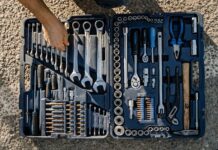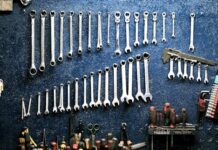When it comes to ensuring maximum efficiency on the job site, the right tool belts can make all the difference. Whether you’re a contractor, electrician, carpenter, or DIY enthusiast, having an appropriate tool belt can help keep your tools organized and easily accessible. In this article, we’ll delve into the various aspects of the best tool belts, with a particular focus on options designed for tradesmen and the importance of ergonomic design.
The Importance of Tool Belts for Tradesmen
For professionals in the construction and manufacturing industries, a well-designed tool belt is a critical component of daily operations. Tool belts for tradesmen provide easy access to tools, allowing for a seamless workflow. This means less time spent searching for tools and more time dedicated to getting the job done. A quality tool belt not only keeps your tools organized but also distributes their weight evenly, reducing strain on the back and shoulders.
Key Features to Look for in the Best Tool Belts
When shopping for the best tool belts, it’s essential to consider several factors, including the material, pockets, adjustability, and comfort. Here are some key features to keep in mind:
- Material: Quality tool belts are generally made from heavy-duty materials such as leather or durable synthetics. Leather provides sturdiness and longevity, while synthetic materials can be lighter and easier to clean.
- Pockets and Tool Holders: Different tool belts come with varying pocket designs. Look for those with ample space and a mix of sizes to accommodate different tools.
- Adjustability: A good tool belt should be adjustable to fit different waist sizes comfortably. Many come with quick-release buckles for easy wear and removal.
- Ergonomic Design: Considering options that promote good posture and reduce back strain is essential, especially for those who spend long hours on the job.
Top Ergonomic Tool Belts for Maximum Comfort
Ergonomic tool belts focus on user comfort, which can significantly enhance productivity on the job site. By distributing weight more evenly and allowing for easy access to tools, these belts can help minimize fatigue. Here are a few top recommendations:
1. Occidental Leather 9855 Pro Framer Tool Belt
This belt is widely regarded as one of the best tool belts on the market. It boasts a combination of heavy-duty leather and multiple pockets that can accommodate a variety of tools. Its ergonomic design allows for comfortable long-term wear.
2. DeWalt DG5617 Professional 20-Pocket Electrician’s Tool Belt
Designed specifically with electricians in mind, this belt offers ample storage in an ergonomic format. The breathable fabric will keep you comfortable throughout the day.
3. CLC Custom Leathercraft 1132 Multi-Tool Waist Belt
This model is known for its affordability and functionality. It comes with multiple pockets and a comfortable backing, making it an excellent choice for tradesmen seeking both quality and value.
Choosing the Right Tool Belt for Your Needs
The process of selecting the right tool belt may seem daunting due to the countless options available. Here are a few steps to ensure you make an informed decision:
- Assess Your Needs: Determine the types of tools you’ll be carrying and the duration of use. Heavy loads may require a sturdier model.
- Try Before You Buy: If possible, test the tool belt on before purchasing. Ensure it fits comfortably and doesn’t restrict movement.
- Read Reviews: Taste the experiences of other tradesmen. Websites like [The Spruce](https://www.thespruce.com/) offer in-depth reviews of the latest tools and gear.
Maintenance Tips for Your Tool Belt
To prolong the life of your tool belt, proper maintenance is vital. Here are some simple care tips:
- Regular Cleaning: Depending on the material, clean your belt regularly to avoid dust and grime buildup, which can lead to wear and tear.
- Inspect for Damage: Regularly check for any signs of fraying or wear, especially around the seams. Repair or replace the belt as necessary to avoid tool loss.
- Store Properly: When not in use, hang your tool belt to prevent it from getting misshaped.
FAQs About Tool Belts
What are the best material options for tool belts?
Common materials for tool belts include leather, synthetic fabrics, and canvas. Leather is known for its durability and long lifespan, while synthetic options are generally lighter and easier to clean.
How do I choose the right size tool belt?
First, measure your waist size. Most tool belts come with adjustable straps that can accommodate a range of waist sizes, but it’s essential to find one that fits snugly without being too tight.
How can I keep my tools organized in a tool belt?
Utilize the different pockets for specific tools, grouping similar items together. Make it a habit to return tools to their designated pockets after use.
Conclusion
In summary, finding the right tool belt can significantly improve both comfort and efficiency on the job site. From reviewing the best tool belts, understanding the features needed for your particular trade, to exploring ergonomics, this guide provides a comprehensive overview to help you make an informed decision. By investing in a quality tool belt tailored to your needs, you not only enhance your productivity but also promote long-term physical health.
Further Reading
For more information on tool belt options and maintenance, consider visiting:










